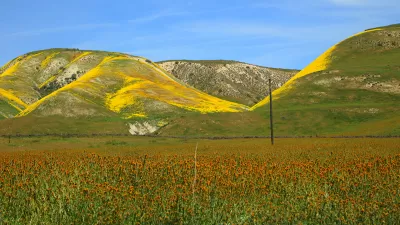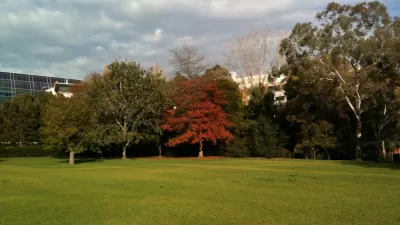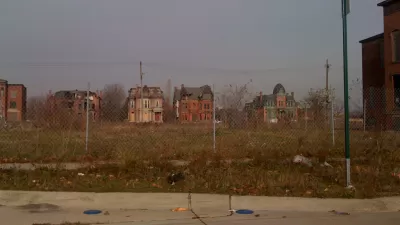Your senses (or lack thereof) aren't deceiving you. Some cities really are worse for seasonal allergies than others, and some of the reasons are entirely preventable.

Helen Lock starts this tale of seasonal allergy suffering with a particularly debilitating, even tragic, episode in Melbourne, Australia:
In 2016, Melbourne experienced a rare and extreme case of “thunderstorm asthma” that led to ten deaths and 8,500 people being admitted to hospital in one day. Ambulance dispatchers struggled to cope with 1,900 calls in the space of five hours, and one hospital ran out of Ventolin asthma inhalers. The storm had caused grass pollen to burst in the air, creating tiny particles that caused serious breathing problems when inhaled.
While allergy seasons like that have led some academics to declare the city the worst in the world for allergies, other cities have their own unique concoction of natural and human-designed factors that lead to seasonal suffering.
Meanwhile, in London, landscaping practices have led to an abundance of tree pollen, aggravating hay fever, according to a horticultural expert. Landscapers in the UK capital – and around the world – plant predominantly male trees because they are less messy than female trees, which shed seeds, fruits or pods, says Thomas Leo Ogren, creator of the Ogren Plant Allergy Scale. “The problem is that while these [male] trees and plants are litter-free, they all produce abundant allergenic pollen.”
Lock's tours Canberra, Tokyo, most of England, and the United States. Stateside, the Allergy and Asthma Foundation of America releases a report [pdf] that ranks cities by pollen counts. "In 2018, McAllen in Texas, Louisville in Kentucky and Jackson in Mississippi made the top of three of the organisation’s 'most challenging places to live with spring allergies' list," according to Lock.
FULL STORY: Which is the most hayfever-prone city – and is 'botanical sexism' to blame?

Rethinking Redlining
For decades we have blamed 100-year-old maps for the patterns of spatial racial inequity that persist in American cities today. An esteemed researcher says: we’ve got it all wrong.

Planetizen Federal Action Tracker
A weekly monitor of how Trump’s orders and actions are impacting planners and planning in America.

Walmart Announces Nationwide EV Charging Network
The company plans to install electric car chargers at most of its stores by 2030.

EPA Awards $267 Million to Clean Up and Reuse Contaminated Sites
The EPA is investing the funds to clean up and redevelop contaminated sites nationwide, supporting economic growth, community revitalization, and environmental restoration.

Knoxville Dedicates $1M to New Greenway
The proposed greenway would run along North Broadway and connect to 125 miles of existing trails.

Philadelphia Launches ‘Speed Slots’ Traffic Calming Pilot
The project focuses on a 1.4-mile stretch of Lincoln Drive where cars frequently drive above the posted speed limit.
Urban Design for Planners 1: Software Tools
This six-course series explores essential urban design concepts using open source software and equips planners with the tools they need to participate fully in the urban design process.
Planning for Universal Design
Learn the tools for implementing Universal Design in planning regulations.
City of Moorpark
City of Tustin
City of Camden Redevelopment Agency
City of Astoria
Transportation Research & Education Center (TREC) at Portland State University
Regional Transportation Commission of Southern Nevada
Toledo-Lucas County Plan Commissions




























